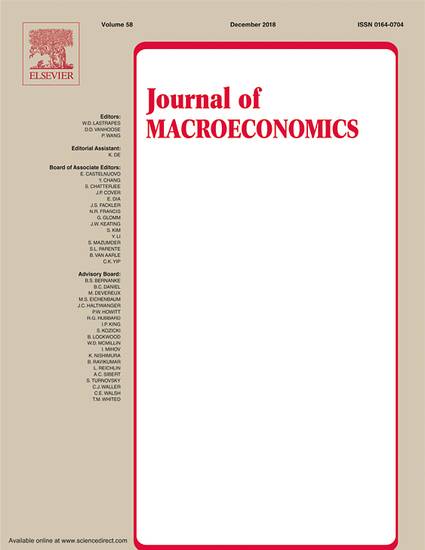
Article
Money and Risk in a DSGE Framework: A Bayesian Application to the Eurozone
Journal of Macroeconomics
(2012)
Abstract
We present and test a model of the Eurozone, with a special emphasis on the role of risk aversion and money. The model follows the New Keynesian DSGE framework, money being introduced in the utility function with a non-separability assumption. Money is also introduced in the Taylor rule. By using Bayesian estimation techniques, we shed light on the determinants of output, inflation, money, interest rate, flexible-price output, and flexible-price real money balance dynamics. The role of money is investigated further. Its impact on output depends on the degree of risk aversion. Money plays a minor role in the estimated model. Yet, a higher level of risk aversion would imply that money had significant quantitative effects on business cycle fluctuations.
Keywords
- Euro area,
- Money,
- Risk,
- Bayesian estimation,
- DSGE
Disciplines
Publication Date
Spring March 1, 2012
DOI
10.1016/j.jmacro.2011.10.003
Citation Information
Benchimol, J., and Fourçans, A., 2012. Money and risk in a DSGE framework: A Bayesian application to the Eurozone. Journal of Macroeconomics 34(1), 95-111.
